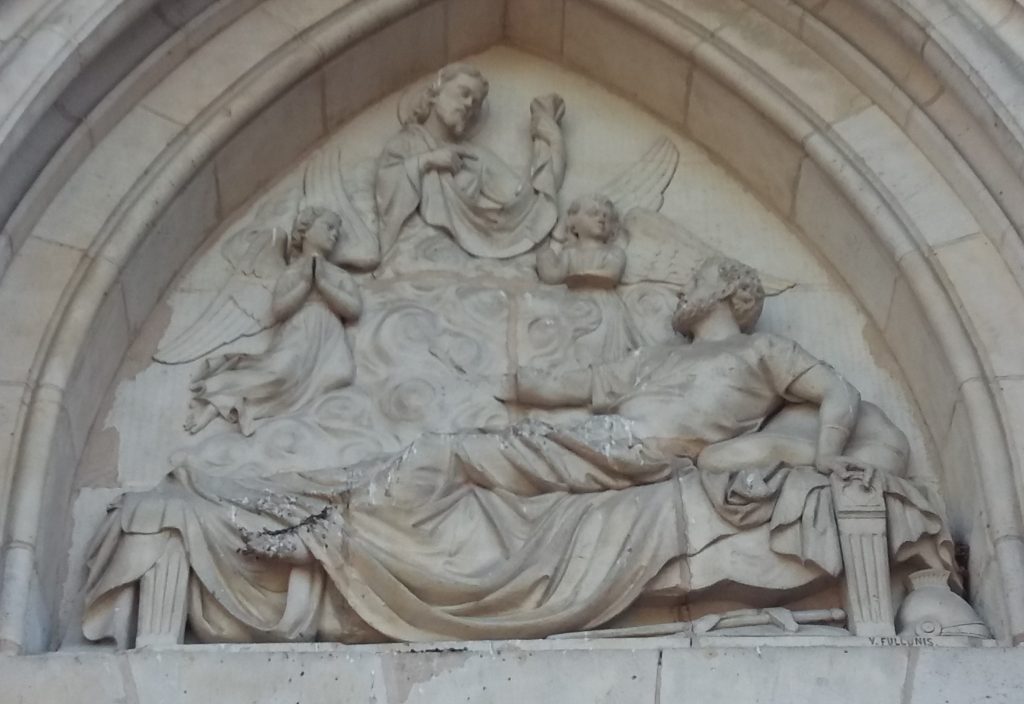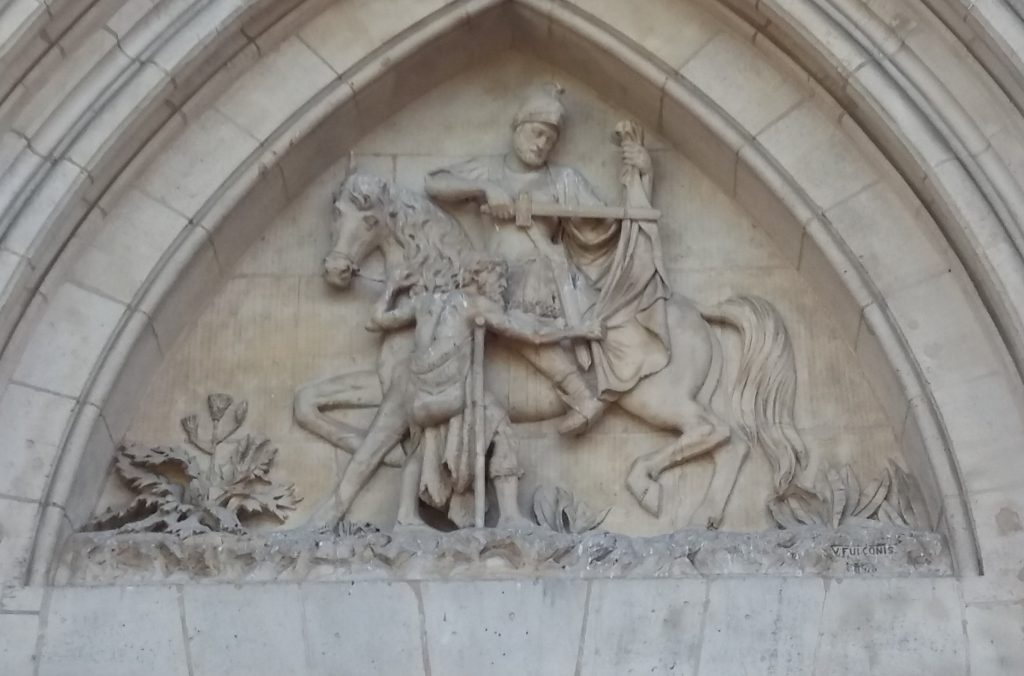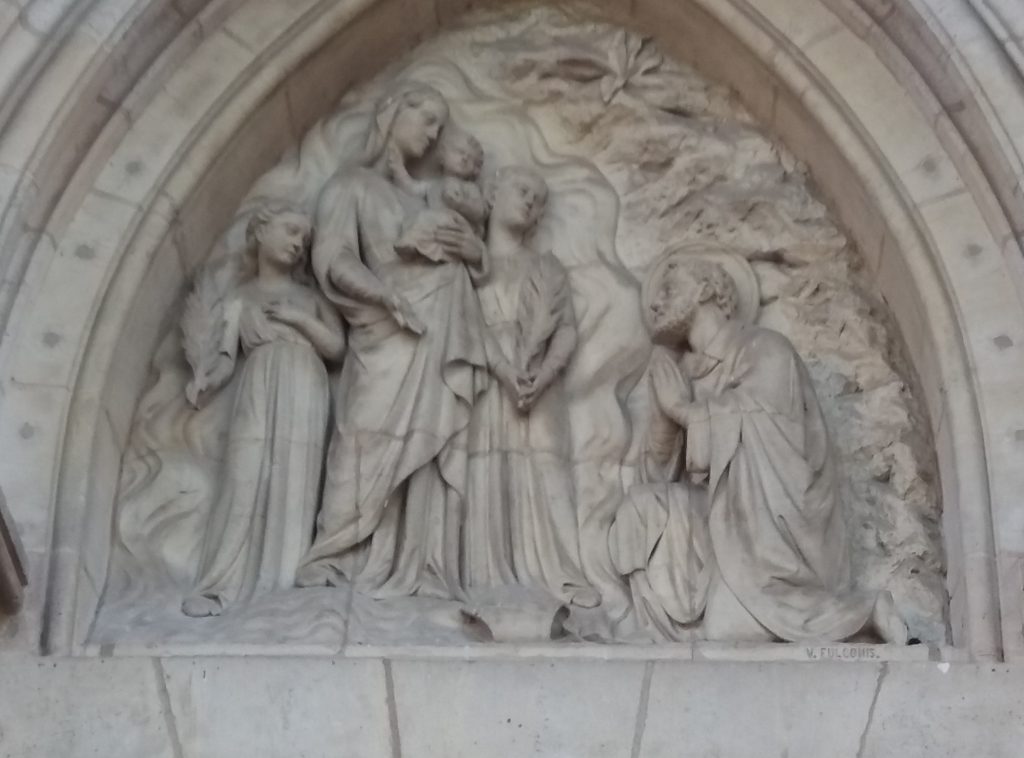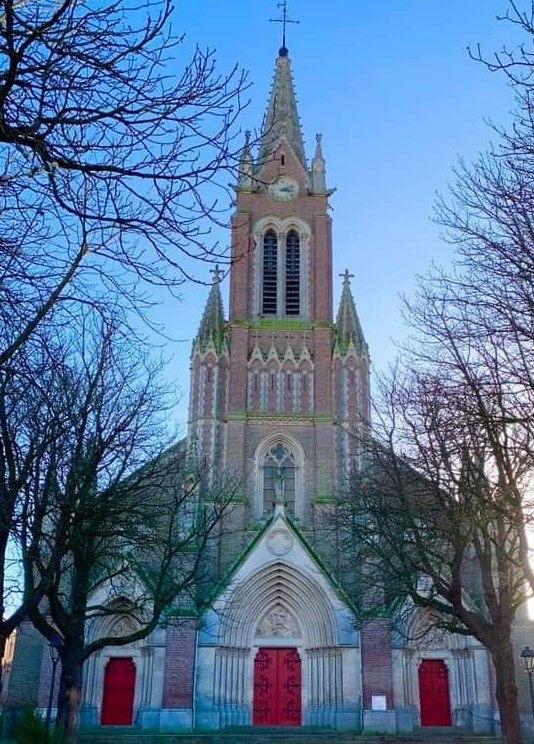L’église Saint-Martin d’Amiens n’est mise en place qu’à la fin du XIXe siècle, ce qui semble tardif pour la ville d’Amiens. En effet, c’est à Amiens que saint Martin de Tours a partagé son manteau avec un mendiant, un soir de l’hiver 334. Cependant, une abbaye Saint-Martin-aux-Jumeaux existait au lieu où se serait tenu le geste de Charité et devenu l’actuel Palais de Justice de la ville, détruit après la Révolution française. Une église paroissiale était également située près de la cathédrale, Saint-Martin-aux-Waides, détruite en même temps que l’abbaye Saint-Martin-aux-Jumeaux.
L’église Saint-Martin est, à la base, une chapelle construite en 1866 dans le quartier Henriville, un quartier créé après la destruction des remparts de la ville en 1825. Cette chapelle, trop petite, est agrandie entre 1869 et 1882 sur les plans de l’architecte Louis Henry Antoine, dans le style néo-gothique. Elle a un plan allongé sans transept, avec une nef flanquée de deux bas-côtés et un chevet polygonal. Le porche central est surmonté d’un clocher ayant une tourelle octogonale à chaque côté et est couvert par une flèche.
Fortement abîmée durant la Première Guerre mondiale, l’église est restaurée et modifiée par l’architecte Jean Guidée en 1935.
L’église est endommagée durant la Seconde Guerre mondiale, notamment par un obus tombé sur la toiture en mai 1940. Elle est restaurée après la libération.
Les tympans de la façade figurent des scènes de la vie de saint Martin en bas-relief, œuvres de Victor Fulconis réalisés en 1882. Le bas-relief de gauche présente le songe de saint Martin, le central une Charité, et celui de droite n’est pas tiré de la Vita Martini de Sulpice Sévère, avec une Vierge à l’Enfant devant laquelle saint Martin se tient à genoux, en prière. Au-dessus du portail central se trouve une statue de saint Martin évêque.



The church of Saint Martin in Amiens was not built until the end of the 19th century, which seems late for the city of Amiens. Indeed, it was in Amiens that Saint Martin of Tours shared his cloak with a beggar one evening in the winter of 334. However, an abbey, Saint-Martin-aux-Jumeaux, existed at the place where the gesture of Charity was held and which became the current Palais de Justice of the city, destroyed after the French Revolution. A parish church was also located near the cathedral, Saint-Martin-aux-Waides, destroyed at the same time as the abbey of Saint-Martin-aux-Jumeaux.
The church of Saint-Martin was originally a chapel built in 1866 in the Henriville district, a district created after the destruction of the city walls in 1825. This chapel, which was too small, was extended between 1869 and 1882 according to the plans of the architect Louis Henry Antoine, in the neo-Gothic style. It has an elongated plan without a transept, with a nave flanked by two aisles and a polygonal chevet. The central porch is topped by a bell tower with an octagonal turret on each side and is covered by a spire.
Badly damaged during the First World War, the church was restored and modified by the architect Jean Guidée in 1935.
The church was damaged during the Second World War, notably by a shell that fell on the roof in May 1940. It was restored after the liberation.
The tympanums on the façade feature scenes from the life of Saint Martin in bas-relief, the work of Victor Fulconis in 1882. The bas-relief on the left shows the dream of Saint Martin, the central one a Charity, and the one on the right is not taken from the Vita Martini by Sulpice Severus, with a Virgin and Child before whom Saint Martin is kneeling in prayer. Above the central portal is a statue of St Martin the bishop.

 "/>
"/>